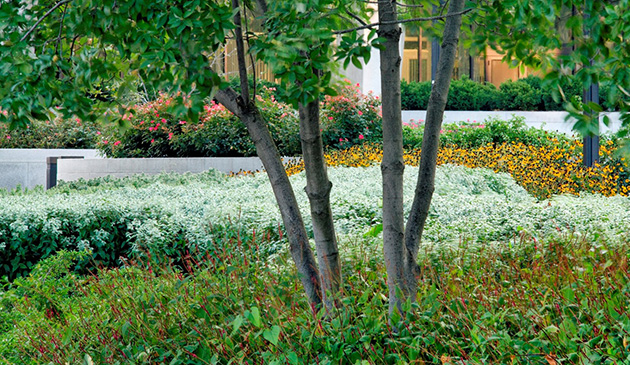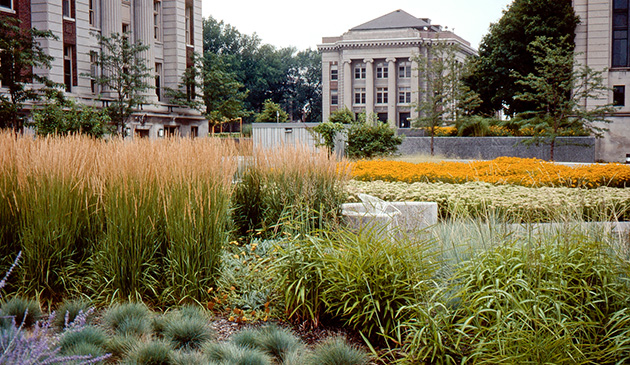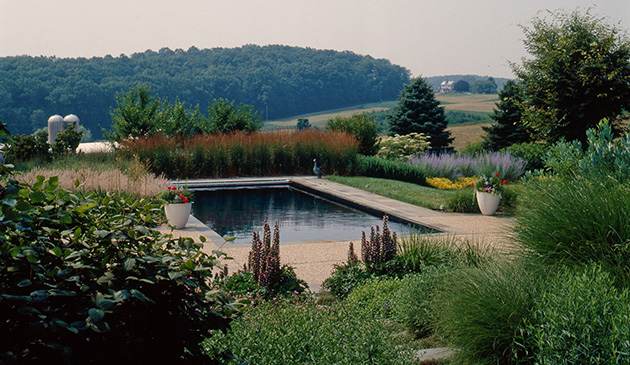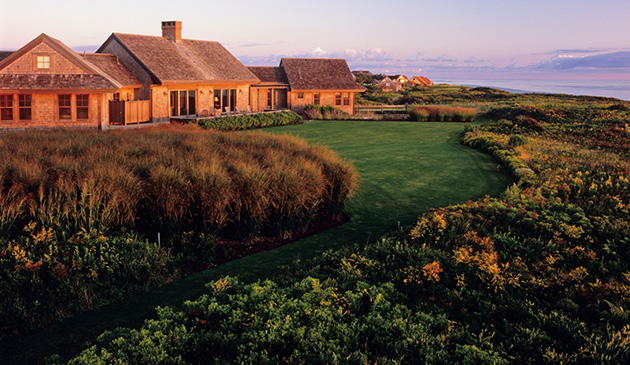2015 Boasberg Fellow Reflects on Her Research
 Federal Reserve Board Garden. Photo courtesy of Oehme, Van Sweden & Associates
Federal Reserve Board Garden. Photo courtesy of Oehme, Van Sweden & Associates
As the 2015 Sally Boasberg Founder’s Fellow, I worked over the course of seven weeks at the The Cultural Landscape Foundation’s headquarters in Washington, D.C., crafting essays for the Foundation’s searchable What’s Out There database. Much of my research focused on projects by landscape architects Wolfgang Oehme and James van Sweden, whose collaborative work will be the subject of TCLF’s upcoming annual Landslide exhibition, co-curated with the National Building Museum in Washington, D.C.
Although I arrived at TCLF with prior training in reading and designing landscapes, through my fellowship I learned a related but markedly different skill: how to describe designed landscapes succinctly to a diverse audience. As art historians and other visually oriented researchers have long known, description is not simply a preliminary or documentary matter—it is in fact no simple matter at all. Done well, description is an art that can entice and edify the reader, and open the door to insight and analysis for the writer. And it was when I began to grapple with how to describe the landscapes by Oehme, van Sweden & Associates that patterns and connections within them began to emerge. In researching almost 40 public and private projects, several characteristics of the firm’s “New American Garden" style came to the fore, as did examples of the designers’ willingness to experiment in order to produce a moment of clarity.
The David M. Lilly Plaza at the University of Minnesota’s Twin Cities campus is a case in point. Research began by systematically isolating the site’s physical components, its plant palette, furnishings, and hardscape materials, as well as its geometry, circulation, and surrounding environment. Through describing these elements, it became clear that there was much more to say about the uses of hierarchy, symmetry, and contrast, and about the experience of moving both spatially and temporally through a landscape that changes by season.
 David M. Lilly Plaza, University of Minnesota. Photo courtesy of Oehme, van Sweden & Associates
David M. Lilly Plaza, University of Minnesota. Photo courtesy of Oehme, van Sweden & Associates
Yet all of this is only part of a What’s Out There essay, which also sketches a history of the site, culled from primary sources, publications, in-house expertise, and direct communication with firms, including, in this case, Oehme, van Sweden & Associates. A timeline of events is constructed as research is gathered about the site’s history of ownership and land use, stakeholders, socioeconomic context, construction process, subsequent alterations, natural disturbances, and present uses.
The process of repeatedly integrating these elements into concise essays revealed consistencies among the firm’s projects, including the precise selection of species based on texture and color; the orchestration of experiences that change to engage users seasonally; horizontal and vertical layering; an ingenious use of mystery, in which the entirety of the garden is never revealed from any singular location; and a signature use of masses or “drifts” of plant material, as exemplified at the Federal Reserve Board Garden in Washington, D.C. This process also revealed the particular nuances of each landscape. The David M. Lilly Plaza, for example, evinces different approaches to design within a single site: one quadrant of the rooftop garden is covered with manicured lawn, another comprises a monoculture of honey-locust trees, and the remaining two are filled with an evolving mixture of drought-tolerant perennials and tall native grasses planted along concrete terraces and ramps. The uniqueness of this project serves its clients well: students at the university are given the opportunity to wonder and to ponder topics such as biodiversity, resource consumption, and the components of successful outdoor spaces—all the more so because the landscape lies adjacent to the College of Design, where landscape architecture students have studios and classrooms, often passing through the plaza on their way to and fro and studying its design.
I thus discovered that while a signature approach is indeed evident throughout the firm’s portfolio of public projects, there are variations that represent the designers’ thoughtful responses to program, environment, and client. The green roof of the Plant Conservation Center at the Chicago Botanic Garden, for example, gives priority to sustainability-driven pragmatism, while plantings at the Americana Manhasset shopping center masterfully employ horticultural expertise to make a remarkably strong visual impact. The Native Plant Garden at the New York Botanical Garden, on the other hand, is a balance of pragmatism and aesthetics, in alignment with the project’s goals of showcasing the habitat value and visual appeal of plant species native to the Northeast.
 Offutt Residence, Maryland. Photo courtesy of Oehme, van Sweden & Associates
Offutt Residence, Maryland. Photo courtesy of Oehme, van Sweden & Associates
The themes of consistency and variation were also evident in the firm’s residential gardens. Horizontal layers of native grasses and perennials sweep around the Greenhill Residence on Nantucket, preserving expansive views of the coast while blending the property with the naturally occurring dune plants that surround it. Grasses shift in hue throughout the seasons as seedheads provide detail. The Offutt Residence in Maryland, on the other hand, uses smaller drifts of plants to create enclosure and limit views across the pastureland surrounding the overly exposed house. The balance between consistency and variation demonstrates more than responsiveness to client and site. It also demonstrates the intentional flexibility of the "New American Garden" style. Wolfgang Oehme and James van Sweden’s approach was never formulaic; rather, it applied and adapted core principles in a manner that was, in the firm’s words, “sympathetic to the environment.”
My work with The Cultural Landscape Foundation was an engaging, challenging, and ultimately revelatory experience that will continue to inform my future endeavors. In the fall, I will begin teaching within a multidisciplinary graduate program in landscape design and planning at the Conway School in Easthampton, Massachusetts. I will no doubt continue to be inspired by the designs of Wolfgang Oehme and James van Sweden, and I look forward to sharing their work—and that inspiration—with my students.
The New American Garden - The Landscape Architecture of Oehme van Sweden exhibition will open at the National Building Museum in Washington, D.C., in October 2015, on the 25th anniversary of Bold Romantic Gardens, written by the firm's founders Wolfgang Oehme and James van Sweden.

Greenhill Residence, Nantucket. Photo courtesy Oehme, van Sweden & Associates



